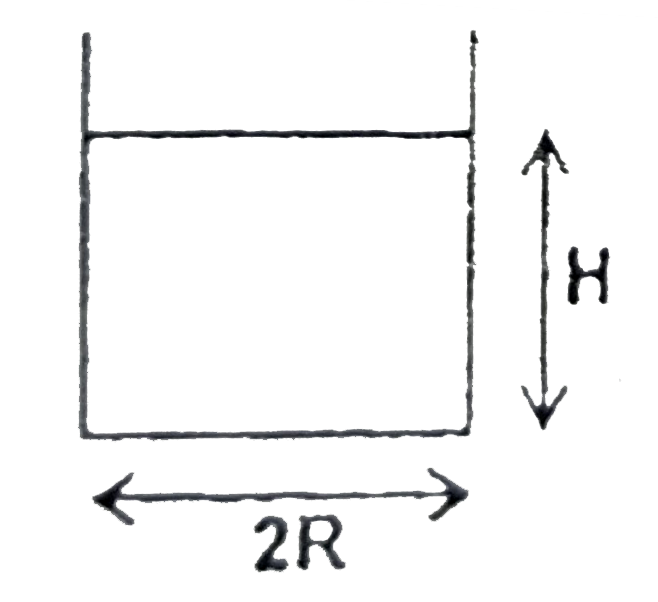The temperature of the atmosphere at a high altitude is around 500∘C. Yet an animal there would freeze to death and not boil. Explain.
Step by step video & image solution for The temperature of the atmosphere at a high altitude is around 500^(@)C. Yet an animal there would freeze to death and not boil. Explain. by Physics experts to help you in doubts & scoring excellent marks in Class 11 exams.
Updated on:21/07/2023Topper's Solved these Questions
- HEAT TRANSFERBOOK - HC VERMA ENGLISHCHAPTER - HEAT TRANSFEREXERCISE - EXERCIESE
55 Videos
- HEAT AND TEMPERATUREBOOK - HC VERMA ENGLISHCHAPTER - HEAT AND TEMPERATUREEXERCISE - Objective 2
6 Videos
- INTRODUCTION TO PHYSICSBOOK - HC VERMA ENGLISHCHAPTER - INTRODUCTION TO PHYSICSEXERCISE - Question for short Answer
4 Videos
Similar Questions
On an X temperature scale, water freezes at −125.0∘X and boils at 375.0∘X. On a Y temperature scale, water freezes at −70.0∘Y and boils at −30.0∘Y. The value of temperature on X-scale equal to the temperature of 50.0∘Y on Y-scale is
View SolutionIt has been recorded that the temperature of the earth’s atmosphere has increased by 0.6∘C.
(a) What has caused this increase ?
(b) Explain its consequences.
View Solution
Knowledge Check
At high altitudes , water boils at a lower temperature because
Athe atmospheric pressure is high at high altitudesBthe viscosity of water is reduced at altitudesCthe atmospheric pressure is low at high altitudesDthe surface tension of water is reduced at high altitudes .
For a copper-iron and a chromel-alumel thermocouple, the plots between thermoelectric emf and the temperature θ of the hot junction (when the cold junction is at 0∘C)are found to satisfy approximately the parabola equation V=αθ+12βθ2 with
α=14μV∘C−1β=−0.04V∘C−2 (copper-iron)
α=41μCV∘C−1,β=−0.002V∘C−2 (chromel-alumel)
Which of the two thermocouples would you use to measure temperature in the range of a about 500∘C to 600∘C?
View SolutionThe density of the atmosphere at sea level is 1.29kg/m3. Assume that it does not change with altitude. Then how high would the atmosphere extend ? g=9.8ms−2. Atmospheric pressure =1.013×105Pa.
View SolutionOn a cold winter dry, the temperature of atmosphere is −T∘C. The cylindrical dram shown is made of insultating material and it contains water at 0∘C. If L is latent heat of fusion of ice, ρ is density of ice and KR is thermal conductivity of ice, the time taken for total mass of water to freeze is

View SolutionThe vapour pressure of a solvent in a solution is lower than that of pure solvent, at the same temperature. A higher temperature is needed to raise the vapour pressure up to the atmospheric pressure, when boiling begins. However, increase is small, like 0.1molkg−1 aqueous sucrose solution boils at 100.05∘C.
Sea water, an aqueous solution, which is rich in Na+ and Cl− ions, freezes about 1∘C lower than frozen water. At the freezing point of a pure solvent, the rates at which two molecules stick together to form the solid and leave it to return to liquid state are equal when solute is present. Fewer solvent molecules are in contact with surface of solid. However, the rate at which the solvent molecules leave the surface of solid remains unchanged. That is why temperature is lowered to restore the equilibrium. The freezing point depression in an ideal solution is proportional to molality of the solute.
Whene 250 m,g of eugenol is added to 100 gm of camphor (Kf=37.9), it lowered the freezing point by 0.62∘C, the molar mass of eugenol is
View SolutionThe vapour pressure of a solvent in a solution is lower than that of pure solvent, at the same temperature. A higher temperature is needed to raise the vapour pressure up to the atmospheric pressure, when boiling begins. However, increase is small, like 0.1molkg−1 aqueous sucrose solution boils at 100.05∘C.
Sea water, an aqueous solution, which is rich in Na+ and Cl− ions, freezes about 1∘C lower than frozen water. At the freezing point of a pure solvent, the rates at which two molecules stick together to form the solid and leave it to return to liquid state are equal when solute is present. Fewer solvent molecules are in contact with surface of solid. However, the rate at which the solvent molecules leave the surface of solid remains unchanged. That is why temperature is lowered to restore the equilibrium. The freezing point depression in an ideal solution is proportional to molality of the solute.
The freezing point iof a 5% by mass CH3COOH (aq.) solutin is −1.8∘C. Th vasn't Hoff factor is (Kf of water =1.86)
View SolutionThe vapour pressure of a solvent in a solution is lower than that of pure solvent, at the same temperature. A higher temperature is needed to raise the vapour pressure up to the atmospheric pressure, when boiling begins. However, increase is small, like 0.1molkg−1 aqueous sucrose solution boils at 100.05∘C.
Sea water, an aqueous solution, which is rich in Na+ and Cl− ions, freezes about 1∘C lower than frozen water. At the freezing point of a pure solvent, the rates at which two molecules stick together to form the solid and leave it to return to liquid state are equal when solute is present. Fewer solvent molecules are in contact with surface of solid. However, the rate at which the solvent molecules leave the surface of solid remains unchanged. That is why temperature is lowered to restore the equilibrium. The freezing point depression in an ideal solution is proportional to molality of the solute.
An aqueous solution of 0.1molkg−1 concentration of sucrose should have freezing point of (Kf=1.86)
View SolutionAssertion (A) The temperature at which vapour pressure of a liquid is equal to the external pressure is called boiling temperature.
Reason (R) At high altitude atmospheric pressure is high.
View Solution
